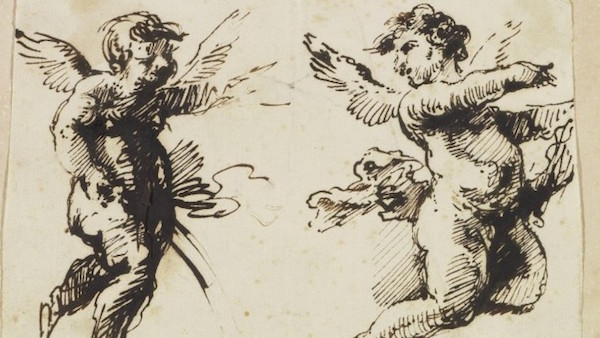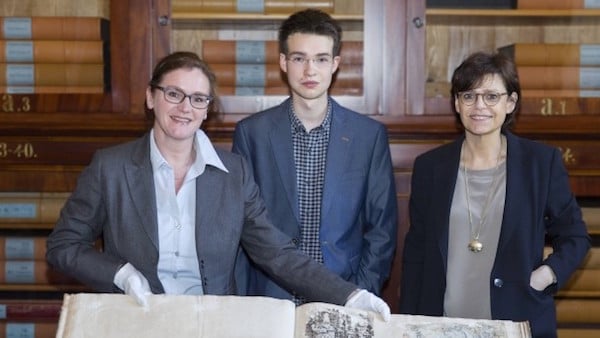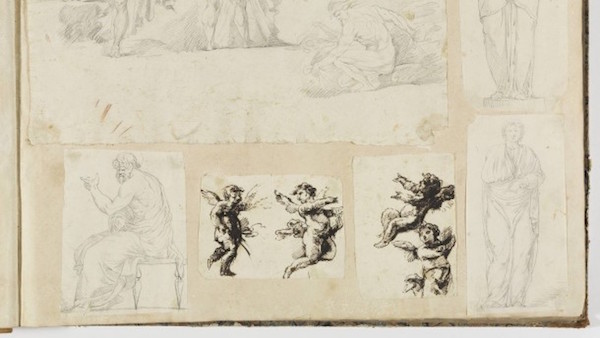Art World
Intern Discovers Hundreds of Piranesi Drawings at German Museum


Henri Neuendorf


Georg Kabierske with Dorit Schäfer, head of copper engravings (L), and director of the Karlsruhe State Museum Pia Müller-Tamm (R)
Photo: Staatliche Kunsthalle Karlsruhe
When high school graduate Georg Kabierske started his four-week internship at Karlsruhe State Museum in Germany last summer, aged 19, he immediately asked directer Dorit Schäfer if the museum had Piranesi drawings in its inventory, an artist he had been researching.
He was told that the museum was in possession of etchings by the Italian Neoclassicist, but no drawings.
But it turns out Schäfer was wrong. In fact the Karlsruhe State Museum had been in possession of the largest known collection of Piranesi drawings for over 150 years. And it was Kabierske, the young intern, who identified them.

The stunning Piranesi drawings were misidentified for over 150 years.
Photo: Staatliche Kunsthalle Karlsruhe
According to the FAZ, the young man noticed something was amiss when he reviewed a set of two albums purportedly by the little known German artist and architect Friedrich Weinbrenner. He noticed that the drawings bore a striking resemblance to Piranesi’s work.
Kabierske was familiar with both artists: he had just held a presentation on Piranesi at school, and his father was involved in the preparation of a comprehensive Weinbrenner exhibition in Karlsruhe.
It turns out the budding art historian was right. A panel of experts have now unanimously determined that the drawings had been misattributed the entire time.

The 20-year-old discovered the misattribution during his four week internship
Photo: Staatliche Kunsthalle Karlsruhe
Weinbrenner had—as was customary at the time—spent time in Italy, studying in Rome between 1792 and 1799.
Upon returning to Karlsruhe he founded an architectural academy which significantly influenced German classicism, using a set of drawings he brought back from Rome as teaching material.
After his death in 1826 the drawings were acquired by the Royal Court of Baden, and later, by the Karlsruhe State Museum in 1861.

The discovery means that Karlsruhe State Museum has one of the largest collections of Piranesi drawings in the world.
Photo: Staatliche Kunsthalle Karlsruhe
NZZ reported that between 1907 and 2010 the drawings were incorrectly exhibited as Weinbrenner’s work on six separate occasions. Nobody noticed the misattribution—until the now 20-year-old Georg Kabierske came along.